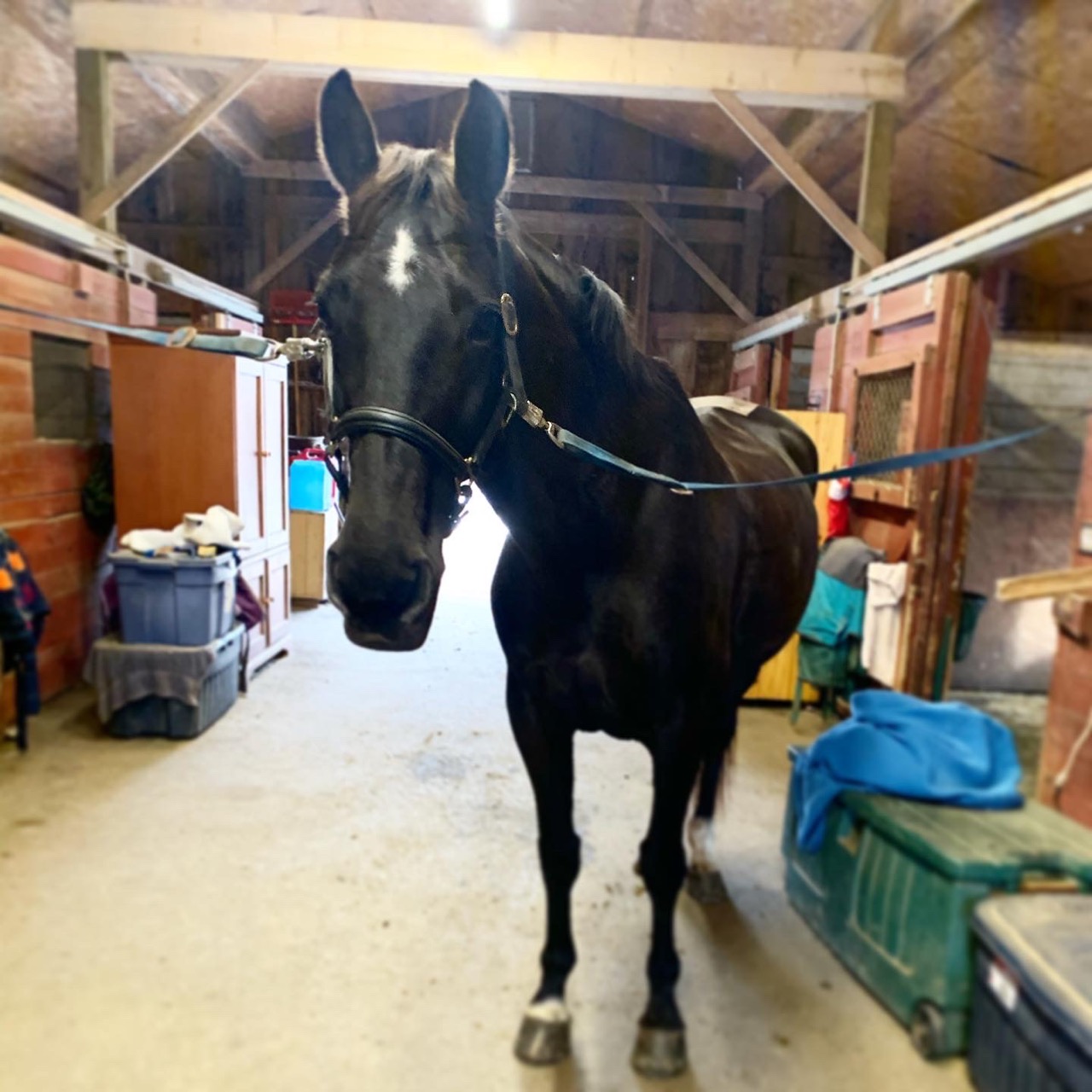My world changed when I entered a barn in Canada and was met by a small black mare standing in the cross ties. She had a sliver of a white star framed between two enormous, dark and liquid eyes.
In the arena, she was a fluid mover and had the level of education I was looking for. But that isn’t why I bought her. She wasn’t easy to ride, but she felt safe, generous and exceedingly forgiving. I experimented with her buttons, clumsily attempting to aid for half passes and lead changes. Through my muddled aids, her ears flicked back and forth, and she willingly offered me her best efforts. I was sold.
I showed the videos to my trainer and we scheduled a pre-purchase exam as quickly as we could. After a rather unexciting exam performed by a highly-recommended vet, I signed the bill of sale, sent the money and she was mine.
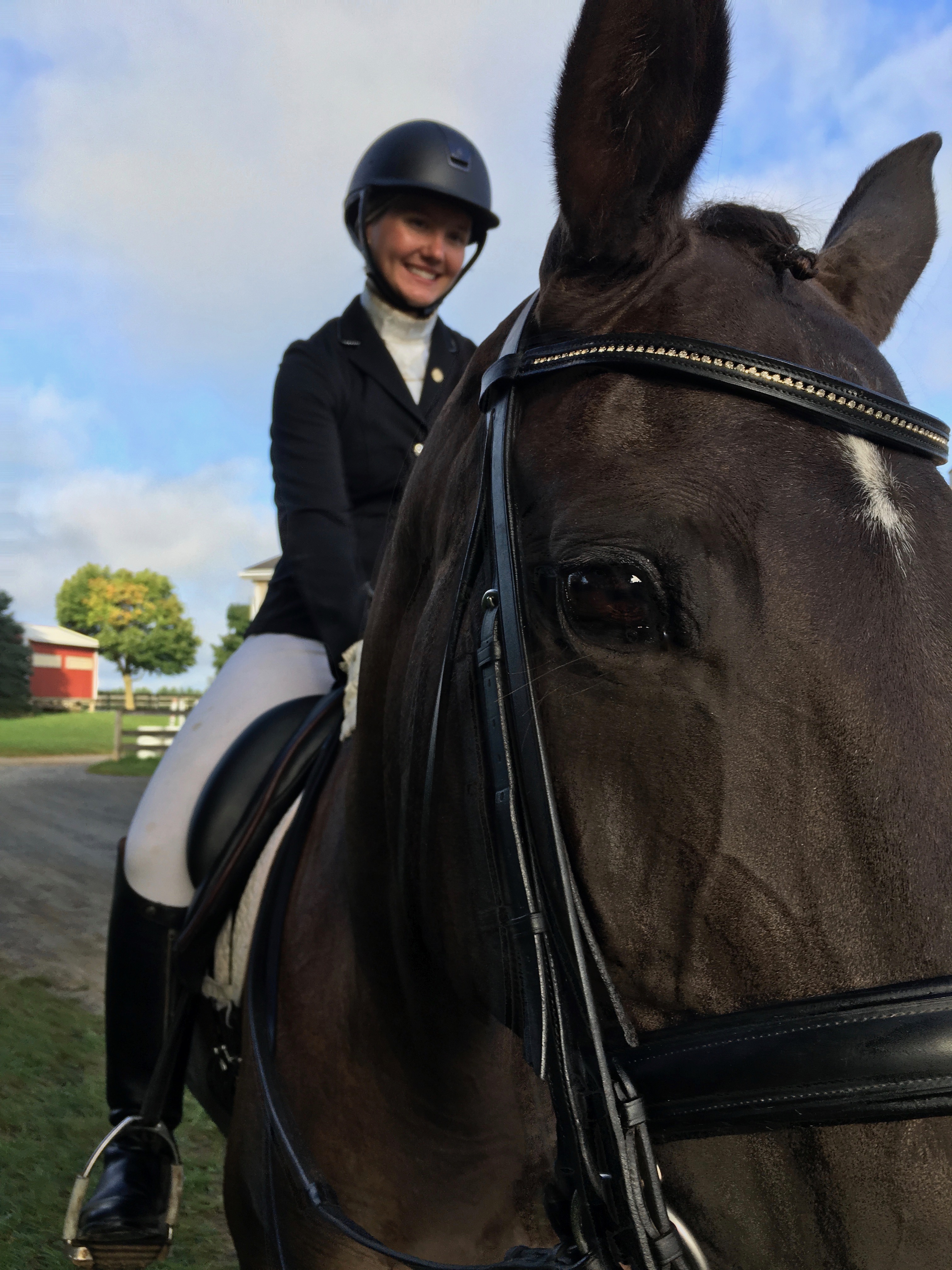
As an Amazon Associate, Dressage Today may earn an affiliate commission when you buy through links on our site. Products links are selected by Dressage Today editors.
Once we began work together at home, I noticed that getting this mare (“Fenna”) to use her back correctly was far more of a challenge than I had anticipated. During the first few months, she went around the ring like a giraffe—head straight up in the air. Getting her to stretch or seek contact at all felt hopeless. But I figured it was her way of saying that I just needed to become a better rider.
Over time, things gradually got better. I took weekly lessons and got to know her. I learned the specific warm-up routine that serves her best. I started to figure out the nuances of riding her in a frame that was beneficial for her body and comfortable for me. I experienced moments of throughness—and though they were fleeting, they were absolutely glorious. Her back felt soft and round underneath me, her stride felt lofty and she was light but steady in my hand. Everything felt dreamy and effortless. And then it would all disappear. She’d go back to either completely evading the bit, flexing the muscles of her underneck or clenching down on the bit and maneuvering like a bulldozer.
In addition to regular lessons and clinics, we tried different saddles and corrective pads and bits and nosebands. I worked with multiple saddle fitters, consulted vets and acupuncturists and chiropractors. We added different supplements, changed her feed and did hock injections. We did blood work and treated her for Cushings. I did hill work with her and hacked her out often to keep her mind and body fresh. We set up gymnastics and trot poles. I longed her in side reins, taking myself off her back to see if that would help her way of going.
Some of these adjustments helped in small ways over the years, but something was missing. With all of that effort and obsessive care, my horse’s topline never seemed to develop the way I wanted and her back muscles never seemed to fill in quite right. Even when she would put on weight in her belly and look very plump, the muscles in her back never came.
Apart from the lack of muscle development, both my vet and I found her to be in generally good health with a solid history of soundness, especially considering her age and mileage. She was just hard to ride! I, again, resolved that I wasn’t a good enough rider for this mare, but I held out with the hope that maybe one day I would be.
We eventually learned how to string those moments of “throughness” together for long enough to get through a 6- or 7-minute test with respectable scores. I finally felt like I was doing this horse some justice. Her topline still didn’t look like I wanted, but we had made huge progress, in our own way, and that was enough to fuel my hopes.
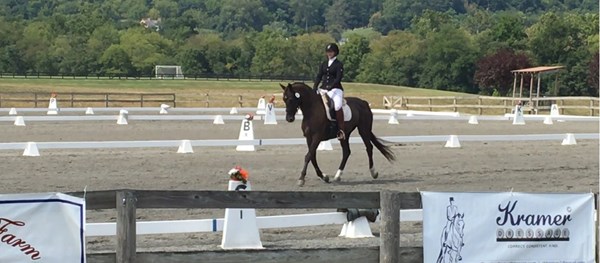

A few years into our partnership, I rode in a clinic with one of my favorite U.S. Olympians. I was thrilled to even be on the back of a horse in the same ring as her—but the experience was completely demoralizing. She lectured me about the importance of riding my horse from an active hind leg over her back and into a soft hand to develop her topline. She pointed at the overdeveloped muscles under her neck.
She wasn’t wrong—but I just wanted to stand on a rooftop and scream “I KNOW! SO HELP ME RIDE HER BETTER!” I was absolutely crushed that Fenna’s body did not seem to match the amount of effort I had put into her training, development and care. What bothered me most was that her muscles seemed to suggest that I didn’t even understand the basics of correct dressage training.
The clinician got on Fenna and was able to encourage her to stretch after about 30 minutes of solid work. “See?” she said, in front of the auditors. “This horse will stretch. You just need to help her.” In the lesson, she also had me swap out my saddle and bit. Then I got back on Fenna and she did stretch more willingly than she ever had before. It helps when an Olympian warms up your horse for you, doesn’t it?
Once again, I reminded myself I wasn’t good enough for the horse. I was the incompetent Adult Amateur getting in her way. And, I was even more distressed because on top of being a bad rider, I also couldn’t afford the new equipment that I was told my horse needed. Let me tell you there were A LOT of tears after that clinic. I remember wailing to my mom over the phone that I could never afford to be “good enough” in this sport.
Regardless, I returned home with strict orders to do nothing but work on stretching to develop her topline, which would take a minimum of three months before I could begin normal work. So that’s exactly what I did.
The result, after three months, was a horse who was very, very heavy on the forehand and still not seeking the contact. How could this be? My horse was nice quality. She was a good mover. She was willing and kind and tried to do whatever I asked. She had schooled through the Prix St. Georges before I bought her. And, despite my lack of confidence, I actually didn’t fall off the turnip truck yesterday. I’m certainly not a great rider, but I’ve been riding for more than 20 years and for many of those years, I’ve ridden under some very good instruction. Sure, we aren’t going to the Olympics, but this basic building block of dressage training should not have been nearly so elusive.
Even during the better times in our training, I had a continual underlying frustration that my horse’s body didn’t work the way classical dressage theory said it should. But the vets said she was generally sound and my trainer was pleased with our progress over the years, so I ignored that feeling. Again and again, I told myself that I was the problem and I needed to get better. And when I felt like there really was something wrong with her body, I told myself I was just being paranoid.
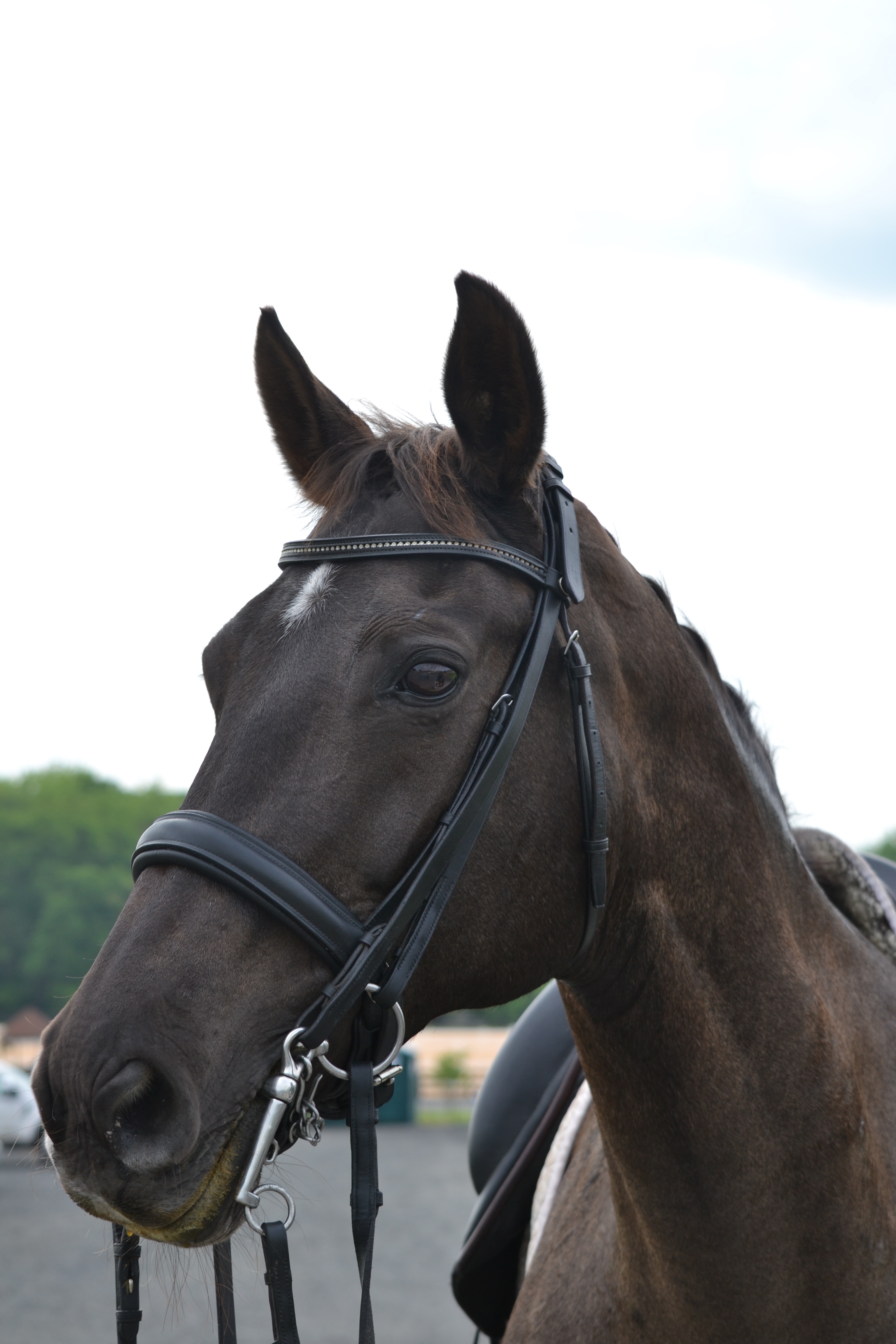
Three and a half years after I purchased Fenna, with our USDF bronze medal and a few unsatisfactory rides at Fourth Level under our belt, I moved from the Washington, D.C., area to Saratoga Springs, New York. My cost of living had significantly decreased, so I was able to invest in a more comprehensive training program for Fenna, in which she would be ridden by a professional, in addition to myself, on a regular basis.
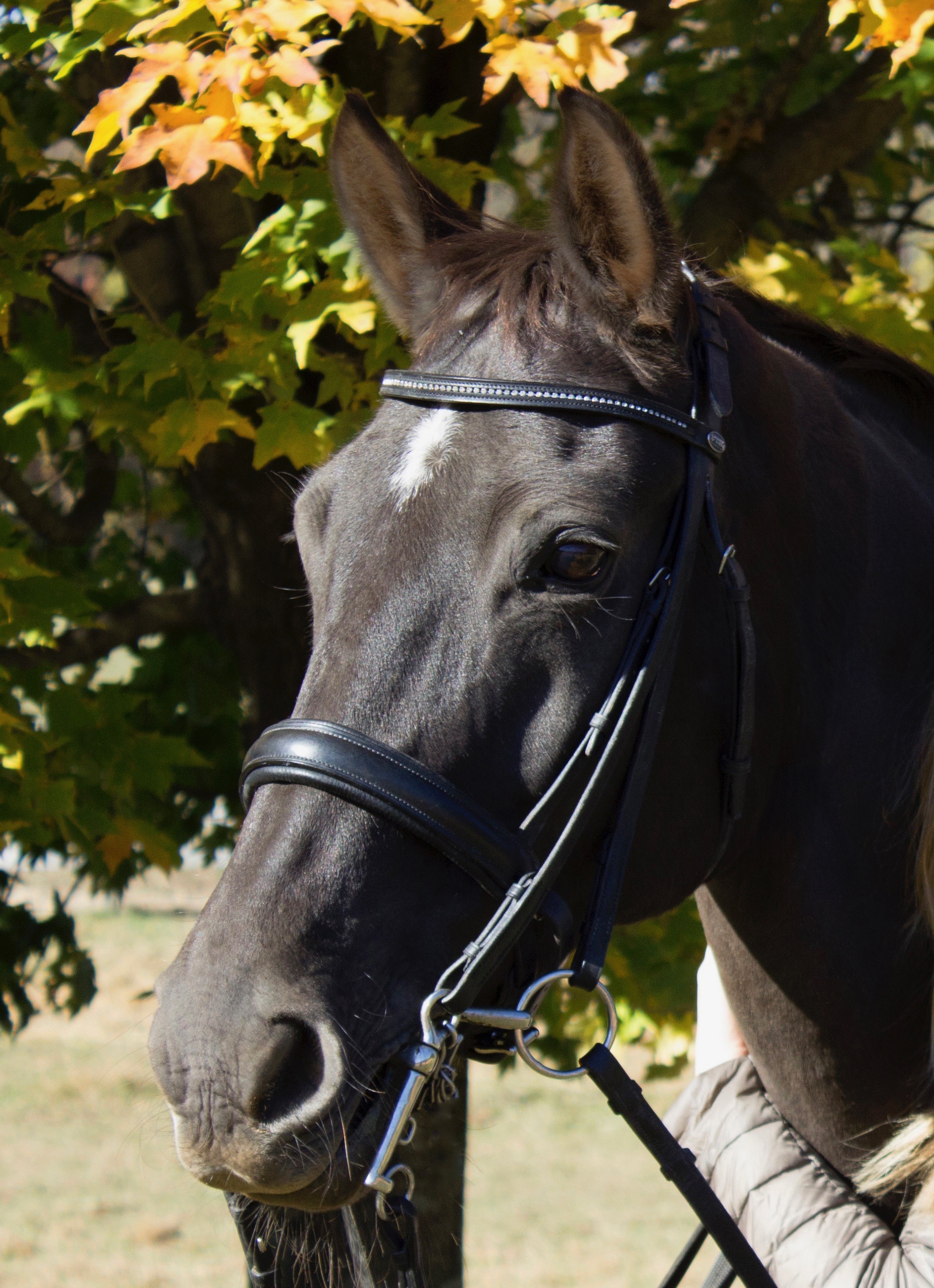
This brought me to a recent discovery that has completely changed the way I look at my riding, my horse, her management and her character.
My new trainer, Jeff Lindberg, noticed there was something unusual within his first few rides on Fenna. When we palpated her back, we found she was very sore—more so than I had ever noticed in the past. Jeff wanted us to get the saddle fitter and vet out immediately. To me, apart from the soreness, Fenna’s performance felt like it always had—and I had always worked closely with my previous vet, so I was hesitant to immediately seek a medical explanation. But I trusted Jeff and, of course, wanted to do right by my horse, so out came the new vet, Dr. Carol Vischer, DVM, of North East Performance Equine.
As Dr. Vischer and I stood in the arena after analyzing Fenna on the longeline, we uncovered the final piece of the puzzle—the piece that made everything else make sense.
“My first guess is going to be kissing spine,” she said gently.
“WHAT?!” I blurted out. I had heard nightmare tales of this condition in which, simply put, the bones in the horse’s spine touch (“kiss”) or overlap, causing pain and discomfort.
All sorts of terrible thoughts flashed through my head—mainly the stories of people who had to retire their horses because of kissing spine. I thought of the horses who bucked and reared and bolted because of the pain associated with the condition—and none of those horses sounded like mine.
Sure enough, her X-rays showed kissing spine as plain as day. It was even clear to my untrained eye. It was so severe in the area under her saddle that there was a significant amount of bone remodeling shown on the X-ray. And that’s when so many different emotions started to flood through me.
First, I was heartbroken. I had failed my horse. Even despite my best efforts to be a diligent owner, my kind and willing partner had been silently suffering all this time. Would this be the end of the road for us? Was it even ethical to continue to ask her to work for me? And even if I could continue to ride her, how would I ever be able to afford the treatments just to keep her comfortable?
Second, I was angry. In hindsight, the diagnosis seemed so obvious. How had I worked with so many good people—trainers, clinicians, vets, equine professionals, various physical therapists—and not a single one of them suggested this was a remote possibility? How did we miss this?!
I wasn’t mad at any one person—just exasperated by the entire situation. It is worth mentioning here that upon further discussion with Dr. Vischer, she was not surprised it hadn’t been identified. Fenna didn’t display any of the serious behavioral issues associated with textbook cases of kissing spine. She had also successfully competed through Fourth Level with her previous owner, so her performance was not what most people would consider “poor.”
Third, I was oddly relieved. All this time, I just thought I was a bad rider. But there was actually a scientific reason why it was so difficult for my horse to use her back correctly. In hindsight, so many things made sense. It explained why those moments of throughness felt so fleeting. It explained why the topline never developed correctly. It explained why it felt like I needed 30 to 40 minutes to warm up my horse every single day. It explained why saddles were difficult to fit and why some days it felt like I was driving with the parking brake on. It explained why it was so hard for her to reach for the bit and stretch into contact. It explained why we were plagued with tongue resistance and why our most effective “show prep” involved giving her two days off before a competition.
Fourth, I was grateful. For as disappointed as I was to hear the news, I realized how thankful I was to have finally learned this. It wasn’t a mystery anymore. I wasn’t crazy! We had answers and explanations and because of that, we had the ability to address it.
But more importantly, I was overwhelmed by the kindness and willingness my horse had shown me despite her pain. Though she was always difficult to ride, she rarely said no. For the last three and a half years, that horse followed me into the arena without hesitation. She stood quietly as I put my foot in the stirrup to swing on. And once I was in the tack, I really feel that she worked as hard for me as she could. I’ve always known she has good character, but it was only now that I came to understand the full extent of it. I didn’t know the true size of her heart until I saw the X-ray of her spine.
So, where to from here? Dr. Vischer has assured me that with proper treatment, good management and correct riding, we can help Fenna become comfortable in her work. Jeff is on board and we’ve gotten into a solid training program that is supported by good communication between the three of us.
Since Fenna was diagnosed in November, she has received various treatments that have already helped her enormously—both from medical and performance standpoints. She’s shown improvement beyond what we even expected and I am (cautiously) optimistic about the future. I’m not sure how or where things are going to go, but we try to focus on the positive aspects of each day while remaining realistic about what needs improvement.
Just a few weeks ago, I was riding in the arena with one of my new barnmates, who was unaware of the recent diagnosis and course of treatments. Once we got back to the barn, she commented on how happy and willing Fenna looked under saddle. With everything we had come to know about my mare’s condition, those words meant more to me than ever. I found myself standing in the barn aisle with tears of relief and gratitude springing to my eyes. We were on the right path. Finally.
